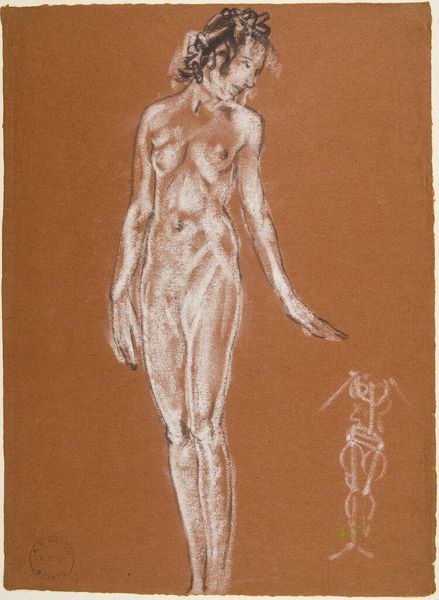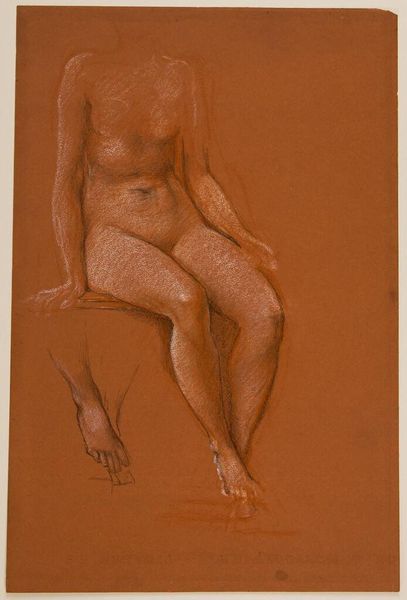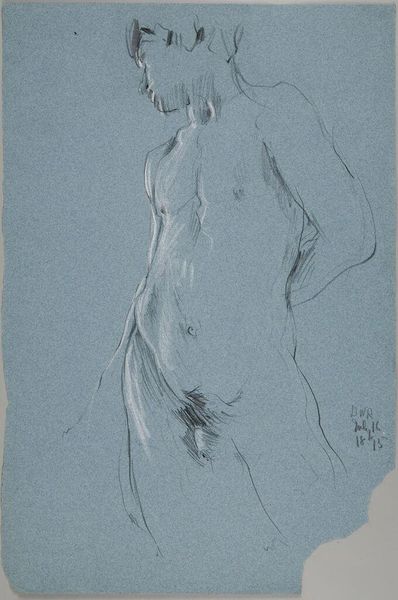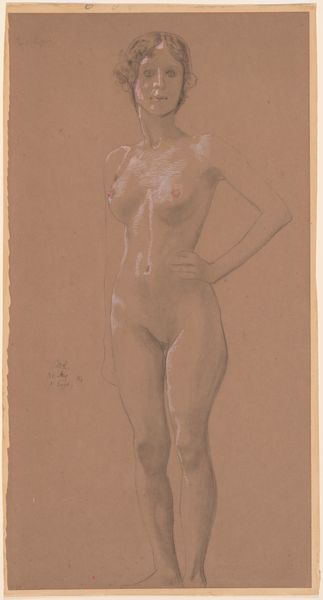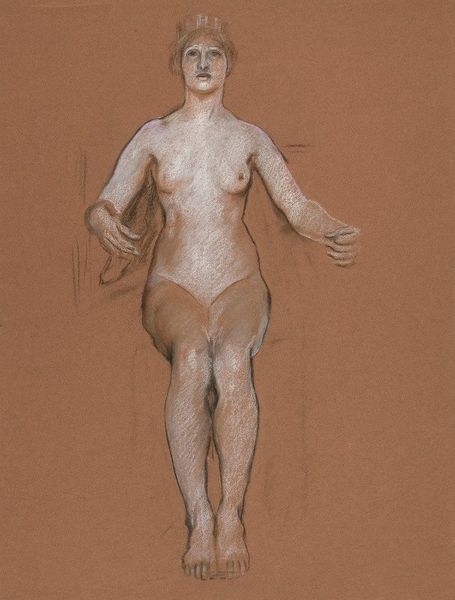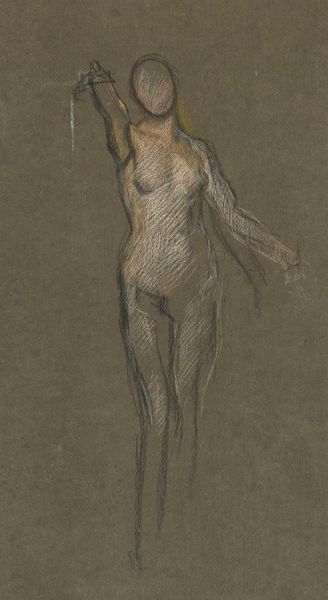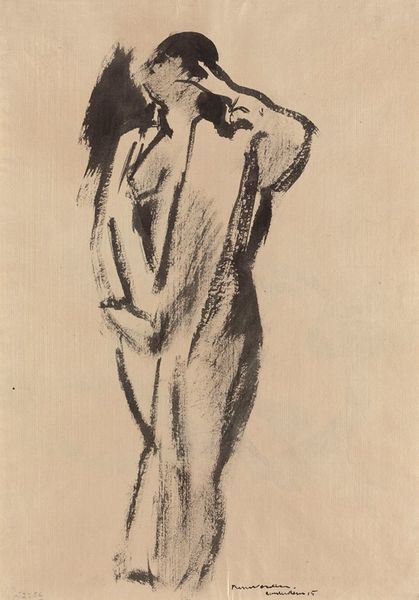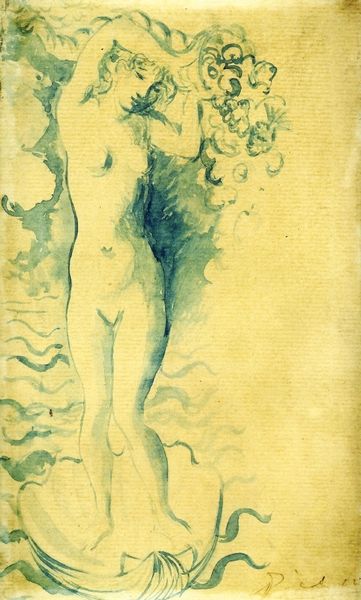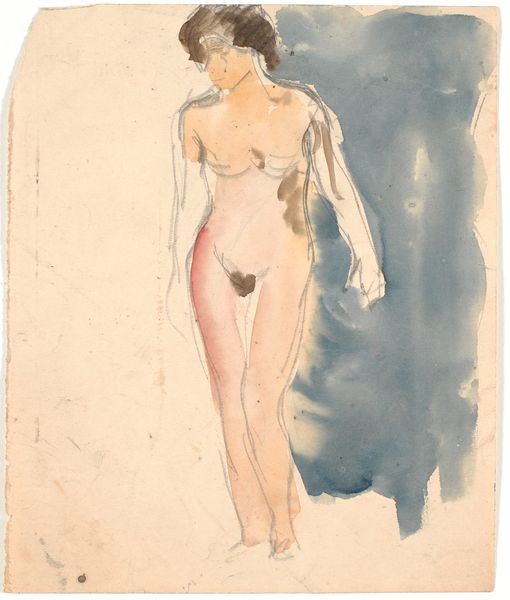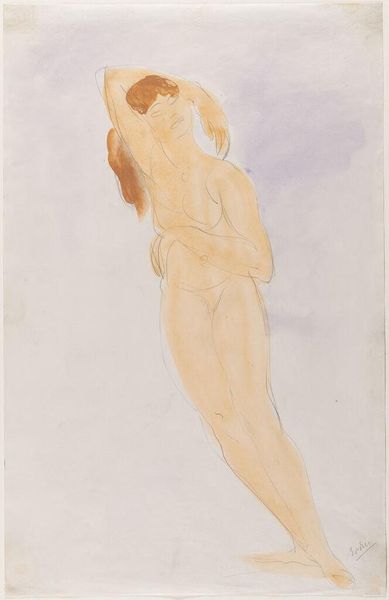
drawing, charcoal
#
drawing
#
figurative
#
figuration
#
charcoal
#
academic-art
#
nude
#
realism
Copyright: Public Domain: Artvee
Editor: We are looking at "Standing Female Nude" by Arthur Bowen Davies, created between 1882 and 1893, using charcoal. I’m immediately struck by how the artist uses white charcoal to bring the figure forward from that muted brown paper—it almost glows. What do you see in this piece? Curator: The immediate contrast in tonality certainly draws the eye, but let’s consider the deeper symbolism. Nudity in art is rarely just about the body; it's loaded with cultural weight. Think about what 'nude' means in the visual language here. The almost classical contrapposto pose, combined with her upward gaze, it subtly alludes to ideals of beauty. Does that connect with how society viewed women then? Editor: That's interesting. So, the artist is referencing historical notions of beauty but perhaps also commenting on them? Curator: Precisely. Her pose isn’t passive or inviting, but contemplative and slightly defiant, maybe the ghostly outline hints at a fleeting image of female identity as caught in time. Consider that Academic art often depicted women as allegories, rather than individuals. Could this be seen as a step away from that? A woman captured in a moment, for herself. Editor: I see what you mean. The shadowing around her definitely evokes a sense of the transient. Curator: And her gaze upward… It implies aspiration or a spiritual quality, contrasting the very material reality of the body depicted in the art. It's an interesting push-pull between ideal and real. The medium, charcoal, adds to that effect – ephemeral yet firm. Editor: That really reframes the image for me. It’s not just a nude drawing but a statement about being. Thanks! Curator: Exactly, we see how visual vocabularies of the time, when deconstructed in this drawing, allows us new narratives and interpretations. A conversation continues to happen through the symbols of a past world that reflect and connect with us in the present.
Comments
No comments
Be the first to comment and join the conversation on the ultimate creative platform.
